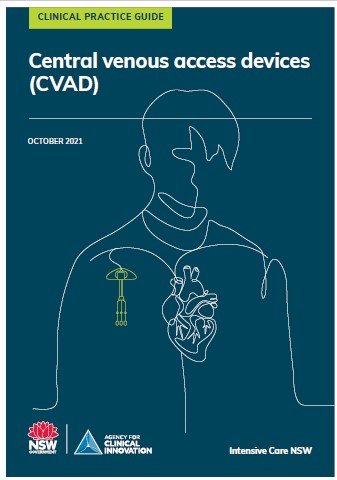Published: October 2021. Next review: 2026.
This clinical practice guide can support NSW local health districts (LHDs) and hospitals to develop local procedures for the care of patients with a central venous access device (CVAD).
A CVAD is used to deliver fluids, medication and nutrition to patients.
While insertion of a CVAD is a common procedure, it can also have significant risks. There are risks with insertion and removal of a CVAD, as well as risks associated with having a CVAD in place for a period of time. These risks include:
- infection
- malposition
- thrombosis
- vascular injury
- air embolus.
The guide provides recommendations for evidence-based clinical practice that can improve patient outcomes.
At a glance
The clinical practice guide covers recommendations for:
- pre-insertion
- insertion
- post-insertion
- removal.
Background
This is an update to the Clinical practice guideline: Central venous access device post insertion management, published in 2014.
The updated guide has been reviewed by a working group, including expert medical, nursing and allied health representatives from LHDs across NSW.
Other resources
Clinical focus report - Central venous access devices and air embolism
Source: Clinical Excellence Commission
